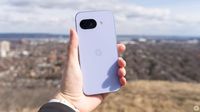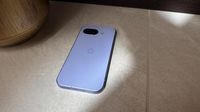Google has officially launched its latest budget smartphone, the Pixel 9a, on April 10, 2025, priced at $499. This new addition to the A-series lineup is designed to offer a balance of features, performance, and affordability, making it a compelling option for consumers looking for a reliable device without breaking the bank.
The Pixel 9a represents a significant evolution from its predecessors, the Pixel 8a and Pixel 9, boasting a fresh design and upgraded specifications. One of the most notable changes is the removal of the camera bar that has characterized previous models. Instead, the Pixel 9a features a nearly flush camera design that houses a 48MP main camera and a 13MP ultrawide camera, allowing for a sleeker aesthetic and improved usability.
Weighing in at just 185.9 grams, the Pixel 9a is lighter than both the Pixel 8a and the Pixel 9, which enhances its portability. It also boasts a larger 5,100 mAh battery, which Google claims can last over 30 hours on a single charge, a significant improvement over the 24-hour battery life of its predecessors. In testing, the Pixel 9a managed to deliver an impressive 13 hours and 8 minutes in benchmark tests, outperforming competitors like the iPhone 16e.
Equipped with Google’s Tensor G4 chip, the Pixel 9a runs Android 15 and comes with 8GB of RAM. Although it shares the same processor as the standard Pixel 9, reviewers have noted that the performance is somewhat limited compared to other flagship devices. The Pixel 9a scored 1,682 in single-core tests and 4,207 in multi-core tests on Geekbench 6, indicating it can handle everyday tasks efficiently, but it may struggle with more demanding applications.
One of the standout features of the Pixel 9a is its display. The 6.3-inch pOLED screen offers a peak brightness of 2,700 nits, making it the brightest display in the A-series lineup. This enhancement ensures that users can view their screens clearly even in bright sunlight, a significant advantage for outdoor use.
While the camera system is a downgrade from the Pixel 8a’s 64MP main sensor, the new setup still delivers reliable performance for casual photography. The inclusion of a macro focus feature allows users to capture detailed close-up shots, which is a welcome addition for those who enjoy taking detailed photos of small subjects.
However, some reviewers have pointed out that the Pixel 9a's performance may not be sufficient for heavy users or those who rely on high-end gaming capabilities. The device can run demanding games like Genshin Impact, but users may need to lower graphics settings to maintain a comfortable frame rate. In terms of AI capabilities, the Pixel 9a features Google’s Gemini, which offers a range of smart features, although it operates on a smaller scale compared to the full version available on flagship models.
In terms of design, the Pixel 9a adopts a flat-edged, minimalist approach that some users may find appealing, while others may miss the distinctive camera bar that has become synonymous with Google’s smartphone line. Available in four colors—Obsidian, Porcelain, Iris, and Peony—the Pixel 9a aims to cater to a variety of aesthetic preferences.
Despite some criticisms regarding its performance limitations and the absence of certain features found in higher-end models, the Pixel 9a is positioned as an excellent choice for budget-conscious consumers who still want access to Google’s innovative technology and software support. With a starting price of $499, it remains competitively priced against rivals like the iPhone 16e, which retails for $599.
Overall, the Pixel 9a is a strong contender in the mid-range smartphone market, combining solid specifications with a user-friendly design and impressive battery life. It’s an ideal option for anyone looking to experience the benefits of Google’s ecosystem without the premium price tag that typically accompanies flagship devices.









